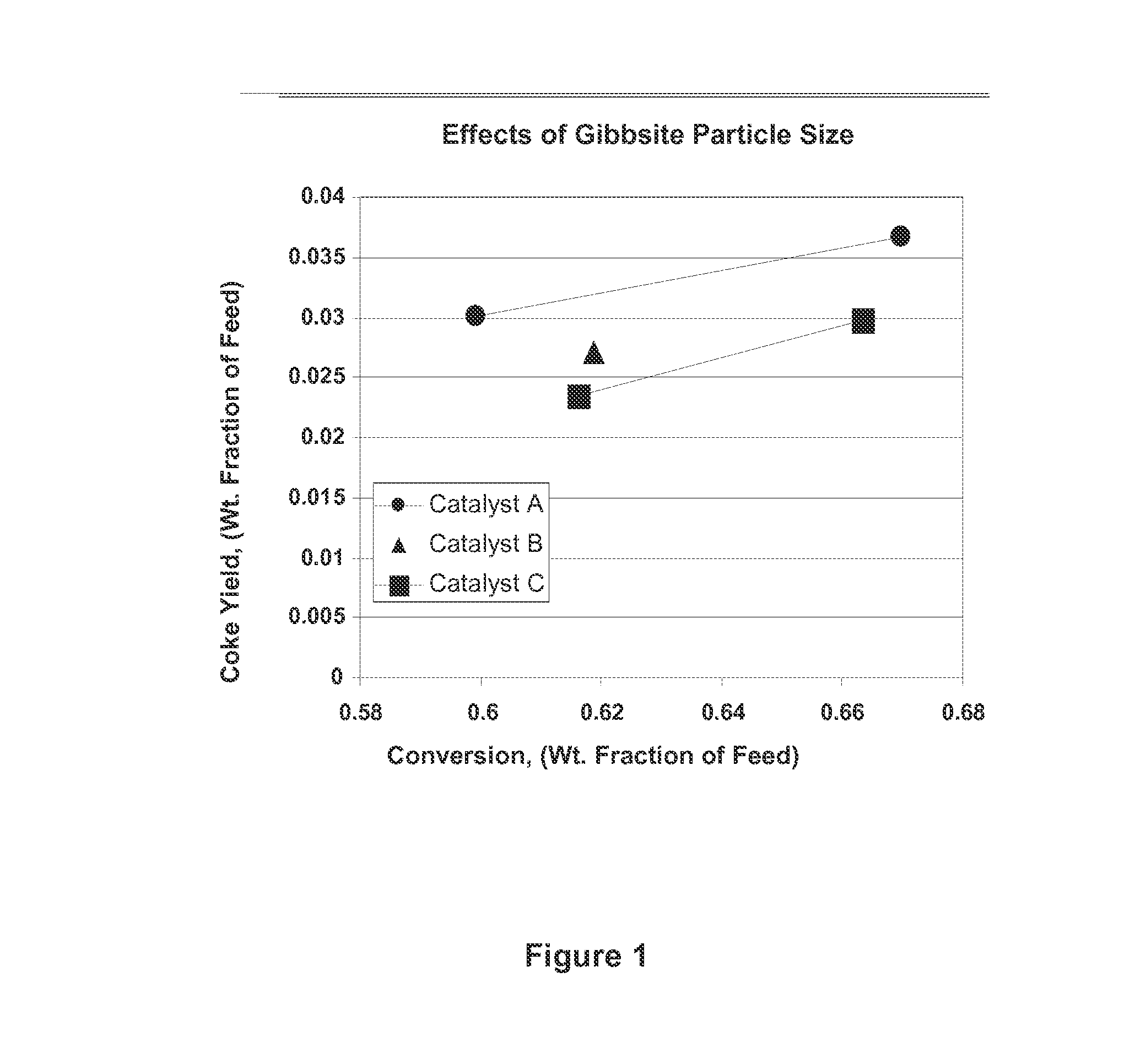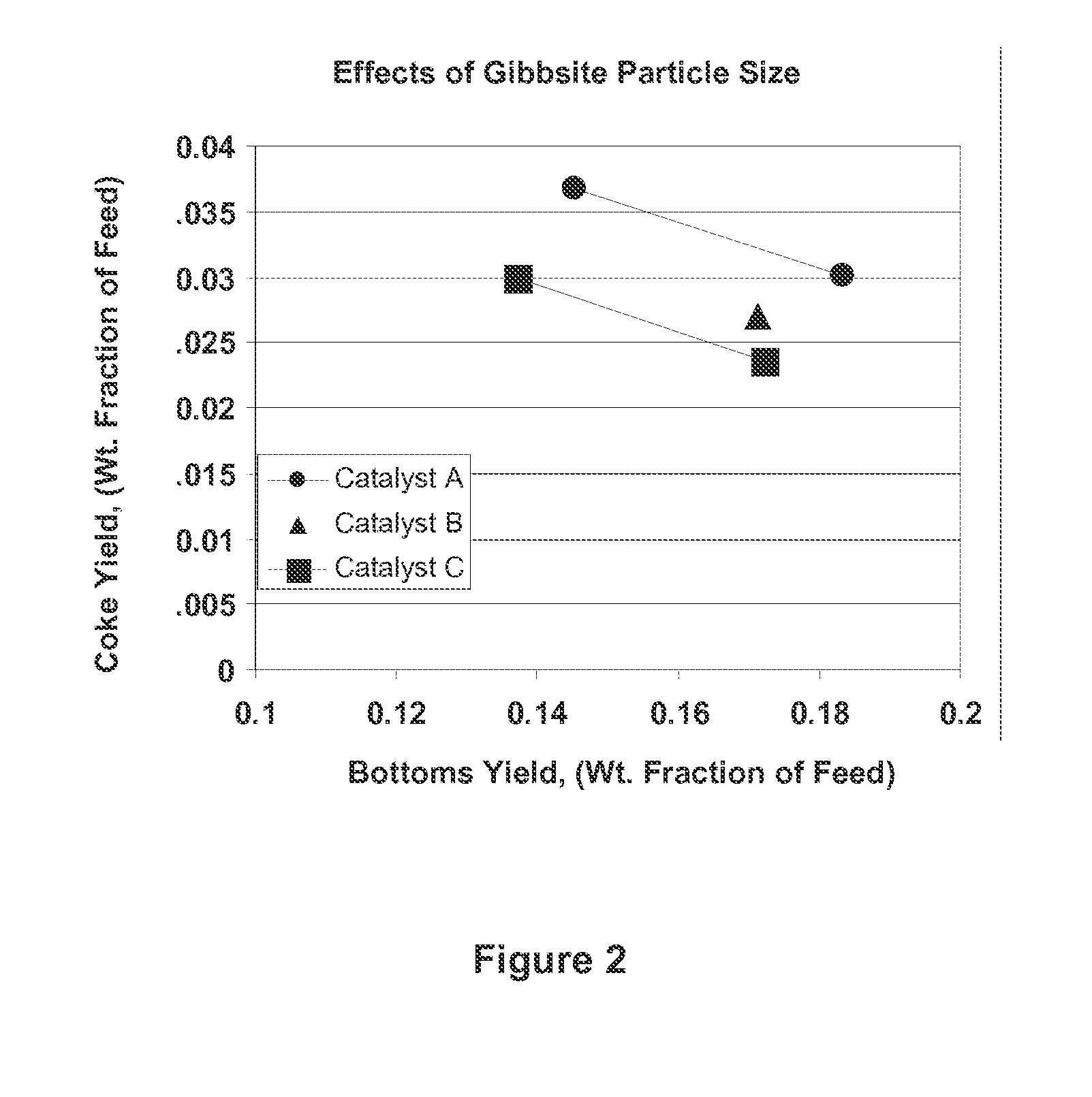Gibbsite catalytic cracking catalyst
a catalytic cracking catalyst and gibbsite technology, applied in the direction of catalyst activation/preparation, catalyst regeneration/reactivation, physical/chemical process catalysts, etc., can solve the problems of difficult to maintain a pore structure that is highly mesoporous, gibbsite is known to have a low surface area, and is used in fcc catalysts. achieve the effect of reducing the coke yield
- Summary
- Abstract
- Description
- Claims
- Application Information
AI Technical Summary
Benefits of technology
Problems solved by technology
Method used
Image
Examples
example
[0040]A set of three catalysts was prepared and tested. These catalysts contained 25 wt % of a REY faujasite as the principle cracking component, 20 wt % of gibbsite, 10 wt % aluminum chlorhydrol as binder, with the balance (45 wt %) kaolin clay.
[0041]The three catalysts in this set differed in the median particle size of the gibbsite. Particle sizes of the gibbsites were measured with a SediGraph™ instrument (Model III), using ASTM Method C958. This instrument measures settling velocities of particles in an aqueous suspension. Particle sizes are calculated using Stokes' Law. A particle density of 2.42 g / cm3 was used in these calculations.
[0042]Catalyst A used gibbsite as received from the manufacturer. Catalyst B used gibbsite that had been milled in a laboratory ball mill. Catalyst C used gibbsite that was milled more severely. The median particle diameters of the three gibbsites used in these three catalysts were:
TABLE 1Median particle diameter(microns)Catalyst A1.14Catalyst B0.3...
PUM
| Property | Measurement | Unit |
|---|---|---|
| particle size | aaaaa | aaaaa |
| median particle size | aaaaa | aaaaa |
| particle size | aaaaa | aaaaa |
Abstract
Description
Claims
Application Information
 Login to View More
Login to View More - R&D
- Intellectual Property
- Life Sciences
- Materials
- Tech Scout
- Unparalleled Data Quality
- Higher Quality Content
- 60% Fewer Hallucinations
Browse by: Latest US Patents, China's latest patents, Technical Efficacy Thesaurus, Application Domain, Technology Topic, Popular Technical Reports.
© 2025 PatSnap. All rights reserved.Legal|Privacy policy|Modern Slavery Act Transparency Statement|Sitemap|About US| Contact US: help@patsnap.com


